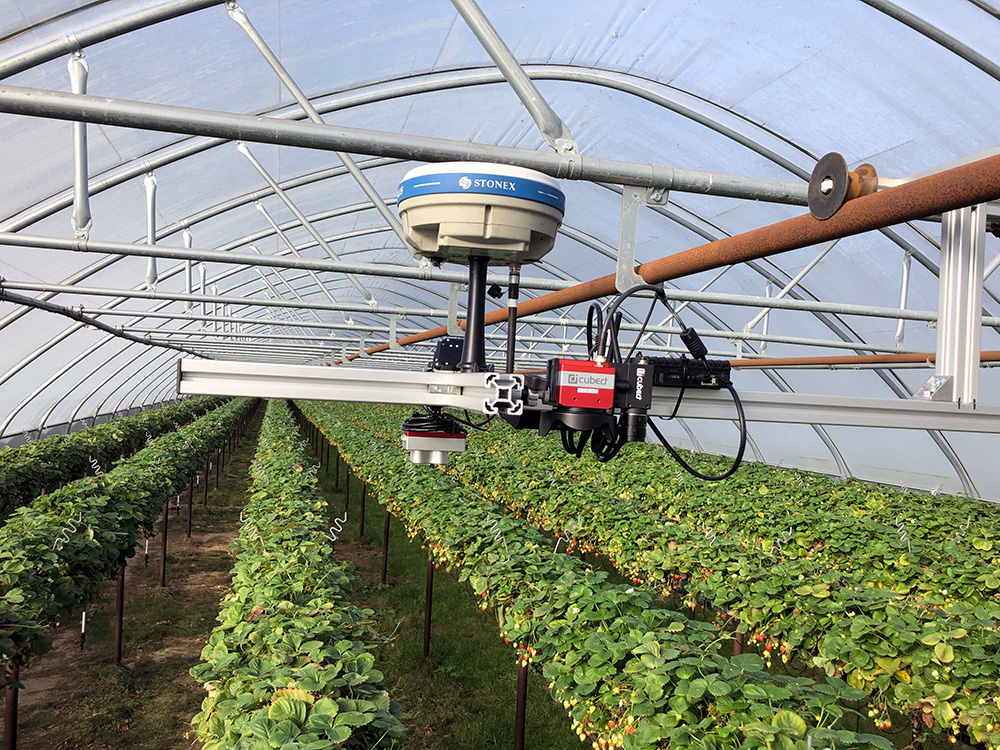Around 130,000 tonnes of strawberries are harvested in Germany every year. The infestation of strawberry plants by viruses, bacteria and fungi is the cause of considerable unwelcome costs, firstly due to loss of production and secondly due to increased expenditure on pesticides and other plant protection agents. Among the fungi, powdery mildew (Sphaerotheca macularis), gray mold (Botrytis cinerea) and root rot (Phytophthora spec.) are the most prevalent pathogens. Early detection of fungal diseases can prevent the spread of infection and save growers wasted investment in spoilt produce and additional costs for pesticides.
The symptoms of an infestation are often only recognized late, when the infection is already well advanced and larger stands of crops are already infected. This can all be avoided by the evaluation of data supplied by a multispectral or hyperspectral camera, which also provides information in the infrared range. In analyzing this data, machine learning systems are capable of finding correlations between optical characteristics of the foliage and an infection of the root – objectively, speedily and reproducibly.
 Fraunhofer Institute for Computer Graphics Research IGD
Fraunhofer Institute for Computer Graphics Research IGD

